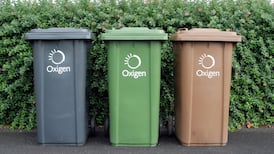The Republic performs well against other EU states in a league table of high-tech innovation published this morning. It comes bottom of the list, however, in public expenditure on research.
Ireland is amongst a small group that includes Sweden, Finland and Denmark in achieving highest marks on the European Innovation Scoreboard's "innovation index". The European Innovation Scoreboard programme arose following the EU Lisbon Summit of March 2000. A preliminary scoreboard was published in September 2000 and this new release represents the first complete analysis, which is based on figures provided by member states.
The scoreboard compares statistical data on 17 indicators in four main areas: human resources; knowledge creation; transmission and application of new knowledge; and innovation finance, output and markets.
It is meant to highlight trends, strengths and weaknesses of member-states' performances and is part of the Commission's benchmarking system to keep track of each state's competitive edge.
The report describes as "particularly striking" that the leading slots in many categories are "dominated by the smaller European countries". Sweden appears on the tables 13 times, Finland eight times, Denmark seven times, the Netherlands six times and Ireland five times.
Ireland leads in two categories: small to medium sized companies "innovating in-house" and "high- tech value-added in manufacturing".
It is in third place in three other categories: output of science and engineering graduates; innovation co-operation by small to medium enterprises; and sales of new-to-market products.
The Scoreboard gives the Republic's strengths as "supply of science and engineering graduates, innovative SMEs and high-tech services". It lists as weaknesses low public research funding, a lack of high-tech patenting and the numbers of people involved in "lifelong learning".
The Scoreboard analysis for research and development expenditure, however, was based on 1999 statistics, figures that had the Republic placed last. Its then expenditure on R&D reached only 0.35 per cent of GDP.
The State's funding of research has been transformed since then with the creation of Science Foundation Ireland which will plough £560 million (€711 million) into information technology and biotechnology research. The Higher Education Authority (HEA) under the Programme for Research in Third Level Institutions is distributing another £500 million State funding.
Most of the HEA monies have been allocated while £60 million of the SFI fund has been given to MediaLab Europe and an initial funding round under SFI has been awarded.
Business expenditure on R&D as a percentage of GDP here also falls well below the EU average, with the Republic languishing sixth from the bottom at 1.03 per cent. It places us ahead of Austria, Italy, Spain, Portugal and Greece.
The Republic ranks poorly on European Patent Office high-tech patent applications. Finland leads this table with 80.4 applications per million population followed by the Netherlands at 35.8 per million population. The Republic made 13.3 applications per million population on this Scoreboard.
The EU is to publish its Innovation Scoreboard annually.











